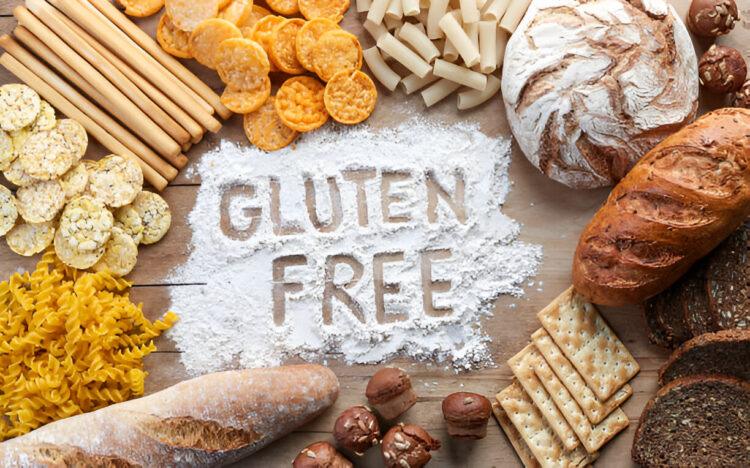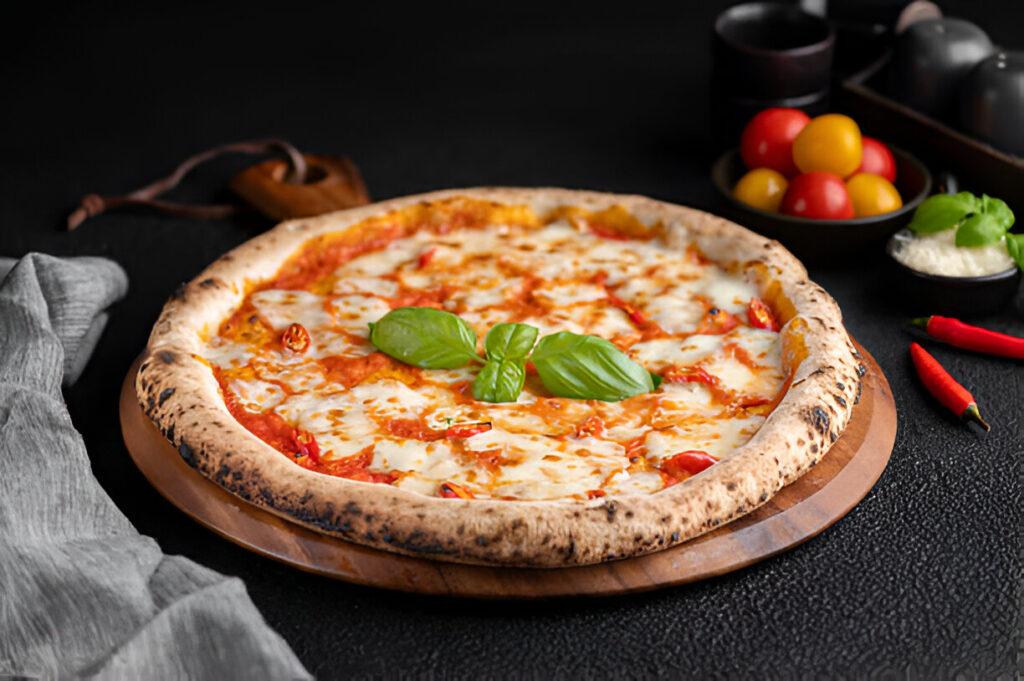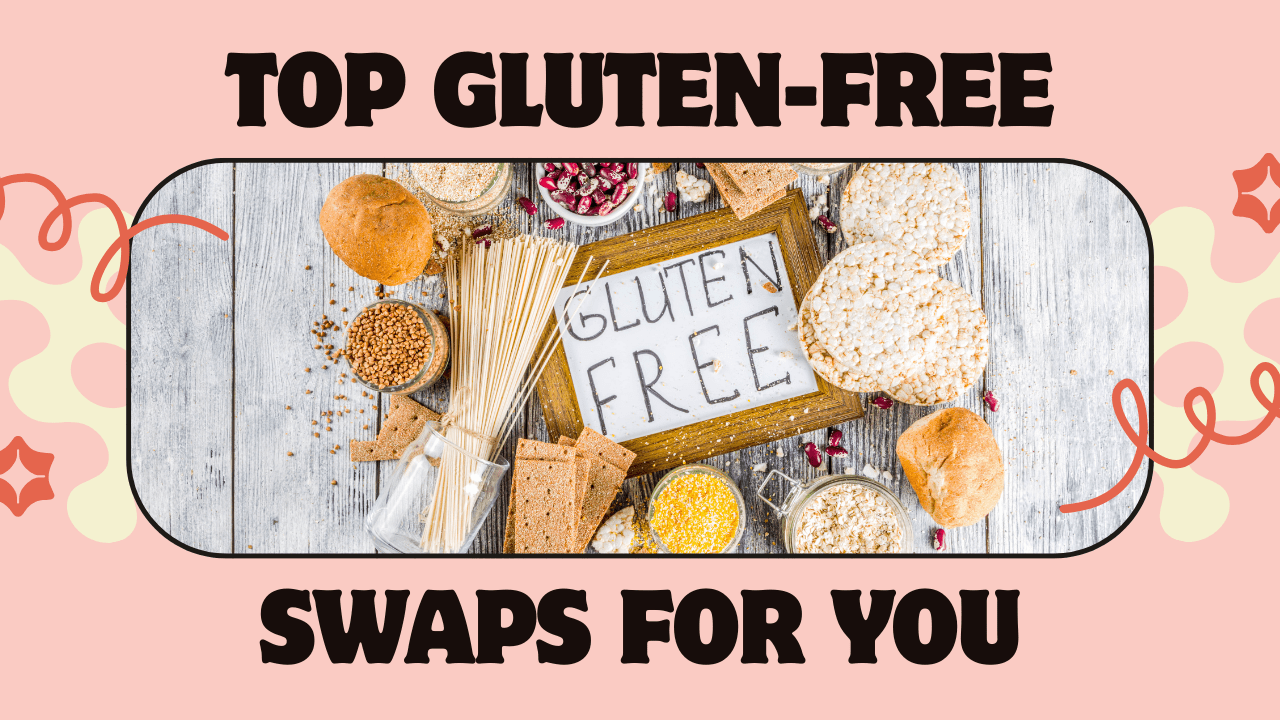Top Gluten-Free Swaps For Everyday Foods
Replacing gluten foods with natural gluten-free options can greatly help when eating gluten-free. Try swapping out these popular items that contain gluten for those that naturally don’t.
You can replace wheat flour with alternatives like quinoa, potato, rice, or buckwheat flour. These flours work well in baked goods like cookies and cakes. You can also use them in soups, stews, and pasta recipes.
1. Couscous

Couscous is a grain that is between pasta and rice. It is a great ingredient to add variety and flavor to any meal. Absorbing flavors and textures beautifully, it should always be in your pantry throughout the year! Added bonus? Cooking fast for weeknight meals is easy with our tasty Couscous with Chicken Sausage and Mixed Vegetables recipe. This meal is quick and healthy. It includes whole grains and protein!
Standard couscous is typically made of wheat, making it unsuitable for those with celiac disease and gluten intolerance. There are gluten-free options that are easy to find. You can look for them in free-from aisles or health food stores. These products are usually made from maize or corn. They often have yellow markings to show they are safe for people who cannot eat wheat.
If you can’t find gluten-free couscous, use another grain that has no gluten. Sorghum is a good choice. It has a similar round shape and works well in most recipes that need couscous. In addition, its fiber content supports healthy digestion.
Quinoa is another gluten-free alternative to couscous that’s packed with protein, vitamins and minerals. Quinoa has a chewier texture than couscous, but it can still be used in most recipes. Just follow the package directions when cooking. You may need more water than with regular couscous for the best results. It makes an ideal ingredient in soups, stews and casseroles or as part of an easy and quick couscous salad!
2. Pasta

Pasta is an essential staple in many diets, beloved by both children and adults alike. If you want to go gluten-free, don’t think you have to give up pasta. There are many gluten-free pasta options available!
When you buy gluten-free pasta in a box, first check that it has no grains. Make sure it does not contain barley or malt that may have gluten. Some companies will also list whether their product was produced in an exclusively gluten-free facility.
Another fantastic option for low-calorie noodles is 100% buckwheat soba noodles, often available at frozen stores. These noodles have a low calorie count and provide good nutrition. However, their unique texture may take time to get used to. I have found that boiling these noodles with oil or butter helps soften its edges and makes them easier for swallowing.
Most gluten-free pastas are made from common flours like corn or rice. However, some use different protein sources. Giada De Laurentiis’ GF line offers an example using quinoa and egg white as sources of protein.
To make gluten-free pasta, add the right amount of water. Do not overwork the dough. Avoid using too much extra starch flour, like Mochiko or tapioca, for dusting. And don’t forget to knead! Gluten-free varieties cook faster than wheat-based ones because they tend to overcook more easily.
3. Bread

Giving up bread can be hard when going gluten-free. Bread is in almost every meal. Not having it can feel like a big loss for people on this diet.
Luckily, there are some exceptional gluten-free alternatives that not only substitute bread but often surpass it in taste.
As you start your gluten-free journey, remember to choose whole grain options. These include rice, millet, corn, and sorghum. You can also use soya bean flour, tapioca, arrowroot, and teff flour. There are tasty breads made with quinoa or amaranth. Many of these breads have xanthan or guar gums. These gums help replace gluten. They bind the dough together and help it rise.
Bread-making uses yeast and sugar to create bubbles of carbon dioxide in the dough. These bubbles help the bread rise, just like eggs do. Enzymes break down wheat’s starch to release maltose which feeds yeast which then consumes it to produce carbon dioxide and alcohol as by-products.
Bread science encompasses much more than this post and graphic can cover. But for beginners, gluten-free substitutions may make all the difference in your meals! Have fun!
4. Noodles
Noodles are an integral part of many cultures and diets around the world. Noodles are mainly used in soups or stews. They can also be stir-fried for extra texture. Fried noodles make a quick dinner option. Noodles are made from different ingredients like wheat flour, rice flour, or other starches. Wheat noodles have gluten, which gives them extra stretch. Other types of dough without gluten can also be used to make noodles.
Wheat-free alternatives like udon and soba noodles can be found at most supermarkets, making it easy to substitute pasta with these options in Italian dishes or cold noodle salads.
Rice or konjac noodles are gluten-free options. They are great in Asian dishes like chow mein or spring rolls. You can enjoy them hot or cold. Konjac noodles are a great gluten-free option. They help you meet your nutritional needs without spending too much money. Their slightly different texture holds up well in soups as well as cold noodle salads.
If you want to try making your own noodles, there are numerous recipes online that will lead you through the process. Ingredients can change based on the type of noodles you want. However, high-protein bread flour and vital wheat gluten are two important ingredients. A pinch of baked baking soda (sodium carbonate) is also required for their characteristic elasticity and texture.
Noodles have long been associated with Chinese cuisine, but they’re widely enjoyed across Asia as well. Udon noodles in Japan are popular for soups and stir-fries. They are also sold as dried packets. Ramen noodles are similarly popular among Americans. Both varieties provide comforting meals while providing essential nutrition.
5. Pizza

Many people choose to eat gluten-free for health or dietary reasons. Pizza is an especially tasty treat when prepared with gluten-free dough or crust.
Grain-free pizza is a great choice for people with mild gluten sensitivities. Eating less gluten can help reduce symptoms like bloating, cramping, and joint pain.
Quina flour is a great gluten-free option for pizza crust. It provides structure and elasticity like regular pizza flour. Mix quinoa flour with other starches like tapioca starch or psyllium husk powder. This will help you make the best pizza crust.
Chickpea flour (commonly referred to as “gram flour”) makes an excellent base for pizza crusts. Not only is it naturally gluten-free and low in carbohydrates, it boasts an irresistibly nutty flavor that pairs beautifully with various toppings.
Apart from these options, you may also experiment with various alternative flours to find one that best meets your preferences. For instance, using rice, potato and tapioca flour gives your pizza crust an ideal chewy texture; using almond and sweet potato flour produces crispier pizza crust results.
Once your ingredients are prepared, it’s time to assemble your pizza! Make sure your baking sheet is nonstick or lined with parchment paper. This will make cleanup easy. Using a metal cake lifter will help you move the rolled-out dough to your pan.

Written by Samantha Greene, a gluten-free home cook with over 10 years of experience creating allergy-friendly recipes the whole family can enjoy.






